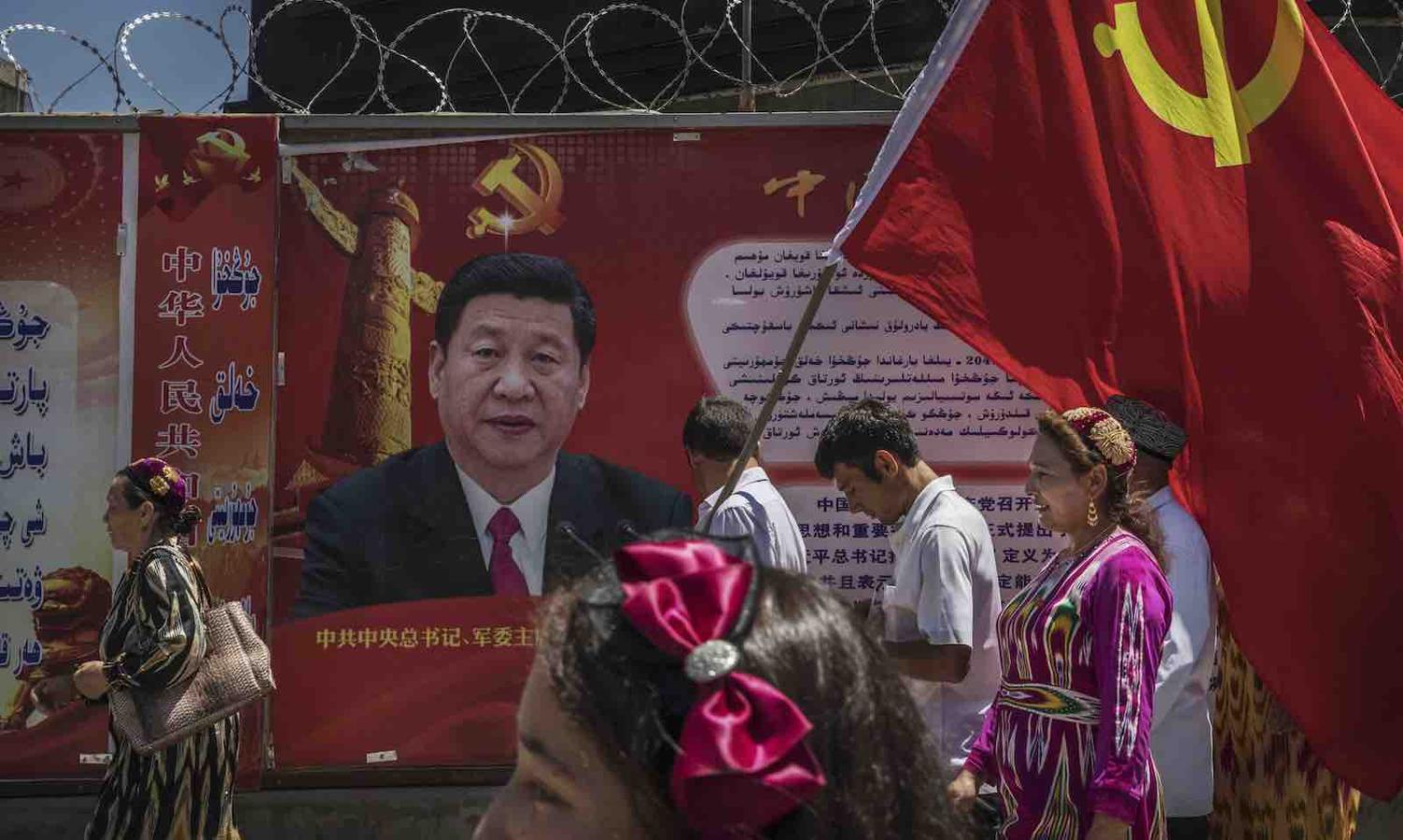Over the last year there has been a steady stream of anecdotal and eyewitness reports of China’s construction of a system of “transformation through education” (jiaoyu zhuanhua) centres in the Xinjiang Uyghur Autonomous Region (XUAR), in the northwest of the country, where up to one million ethnic Uyghurs and Kazakhs are potentially being held indefinitely.
Research by academic Adrian Zenz, based on analysis of 2017–18 government construction and procurement bids for the building of these facilities, has now revealed its full scope.
Zenz’s research demonstrates that such facilities are not only of significant size, with some exceeding 10,000 square metres, but also are akin to internment or concentration camps:
Many bids mandate the installation of comprehensive security features that turn existing facilities into prison-like compounds: surrounding walls, security fences, pull wire mesh, barbwire, reinforced security doors and windows, surveillance systems, secure access systems, watchtowers, and guard rooms or facilities for armed police.
More troubling still is that this could amount to repression via quota, with Zenz noting that:
XUAR regions with major Muslim populations … are simply being assigned fixed internment quotas for re-education, regardless of whether those interned can in fact be convicted of any legal transgressions.
The scale and modalities of this repression cannot help but to call to mind, on the one hand, the Soviet Gulag and Stalinist terror of the 1930s through its apparently quota-driven and bureaucratised nature, and, on the other, the racially based concentration camps of the Nazis due to the clear targeting of Xinjiang’s Turkic-Muslim population.
However, such historical comparisons are loaded. To understand why Beijing has embarked on this program of apparent mass repression now, and what it hopes to achieve by it, we are perhaps better served by reflecting on the history of Chinese policy in Xinjiang and previous uses of “political re-education”.
Since the incorporation of Xinjiang into the People’s Republic of China in 1949, the Chinese Communist Party (CCP) has never been averse to overt repression of ethnic minority opposition and dissent. Indeed, Beijing has consistently pursued an aggressive strategy of integration defined by tight political, social, and cultural control; encouragement of Han Chinese settlement; and state-led economic development backed by the repressive capabilities of the security services.
This has stimulated sometimes-violent opposition from the Uyghur population, who bridle against demographic dilution, political marginalisation, and continued state interference in their religious practice. In the post-9/11 context, Beijing has consistently framed such opposition and violence as “terrorism”, labelling periodic terrorist attacks in or connected to Xinjiang as the work of externally based groups, such as the “Turkistan Islamic Party” (TIP), in order to persuade international and domestic audiences that it too confronts the threat of international terrorism.
In Xinjiang, such framing has helped justify the development of a well-documented, high-tech “security state” to ensure the “comprehensive supervision” of the region. This has occurred in parallel with an intensification of efforts to regulate and control Uyghur religious and cultural practice, and heightened rhetoric of a “people’s war” against “Uyghur terrorists”.
This process has led US-based researcher Sean Roberts to characterise Beijing’s approach toward the Uyghur as a biopolitical one “that seeks to control an entire ethnic group as a virtual biological threat to the body of society”. Such framing is indeed evident in the rhetoric of government officials, who have described Uyghur “terrorism” as a “tumour” to be eradicated, and equated “religious ideology” with drug addiction.
Taken to its logical conclusion, such an exclusionary approach appears at odds with what remains the stated goal of the state in Xinjiang – the assimilation of the Uyghur “to the PRC’s Han-centric civic culture”.
Yet the nomenclature of the camps themselves, and information we have regarding the enforced indoctrination that occurs within them – including singing patriotic songs, and hours-long “study sessions on Xi Jinping Thought, Chinese language, Chinese law, the dangers of Islam, and ‘self-criticism’” – reveals something important about their ultimate intent.
The fact that camps are categorised as “transformation through education” centres demonstrates their lineage to the system of extrajudicial “reform through labour” and “re-education through labour” camps established by the CCP in the 1950s, where the goal of such punishment was to “transform” the prisoner and achieve their “reform and rehabilitation”.
In Xinjiang’s contemporary camps it appears that Beijing wants internees to ultimately return to “normal” life cleansed of markers of Uyghur (and other Turkic-Muslims) distinctiveness and Otherness – such as language, religion, and cultural practice – it has come to perceive as an obstacle to the complete integration of the region. This intent is entirely consistent with President Xi Jinping’s April 2014 call for Xinjiang residents of all ethnicities to identify themselves with China, the Chinese nation, its culture, and “socialism with Chinese characteristics”.
While Xinjiang’s “transformation through education” camps may not constitute the totalitarian systems of mass murder developed in the twentieth century, one is nonetheless reminded of the admonition by the late historian Richard Pipes that “evil ideas lead to evil consequences”. Beijing’s attempt at mass social engineering in Xinjiang is indeed repugnant on many levels, but it is not yet clear how far-reaching the consequences may be.

